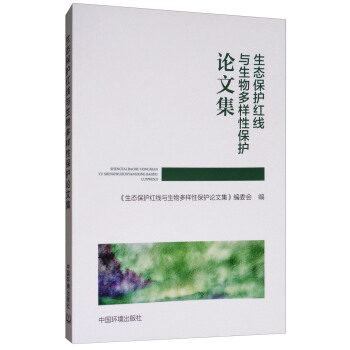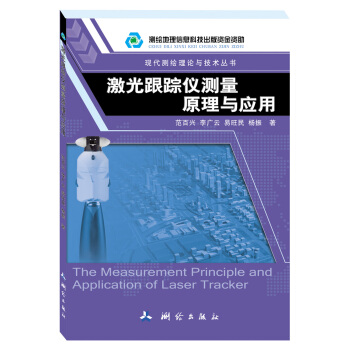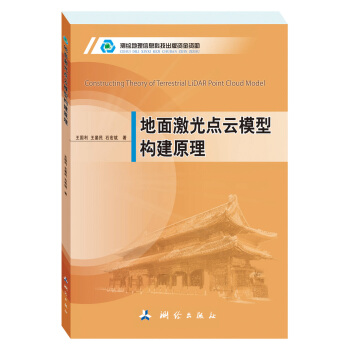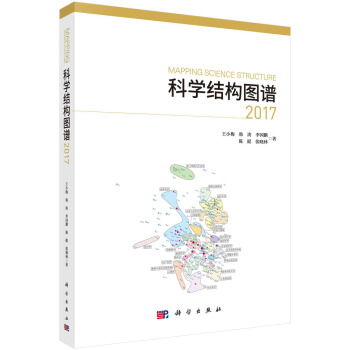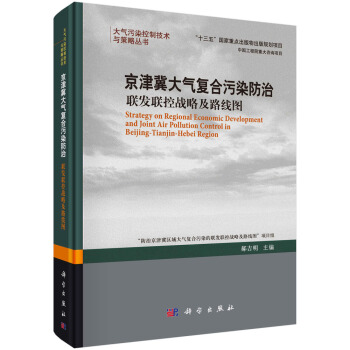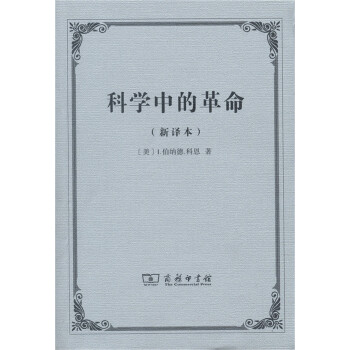![自守函數理論講義 第二捲 [Lectures on the Theory of Theory of Automorphic Functions,Second Volume]](https://pic.windowsfront.com/12244746/5a501e58Nb843df02.jpg)

具體描述
內容簡介
Felix Klein著名的Erlangen綱領使得群作用理論成為數學的核心部分。在此綱領的精神下,Felix Klein開始一個偉大的計劃,就是撰寫一係列著作將數學各領域包括數論、幾何、復分析、離散子群等統一起來。他的一本著作是《二十麵體和十五次方程的解》於1884年齣版,4年後翻譯成英文版,它將三個看似不同的領域——二十麵體的對稱性、十五次方程的解和超幾何函數的微分方程緊密地聯係起來。之後Felix Klein和Robert Fricke閤作撰寫瞭四捲著作,包括橢圓模函數兩捲本和自守函數兩捲本。弗裏剋、剋萊因著季理真主編迪普雷譯的《自守函數理論講義(第2捲)(英文版)(精)》是對一本著作的推廣,內容包含Poincare和Klein在自守形式的高度原創性的工作,它們奠定瞭Lie群的離散子群、代數群的算術子群及自守形式的現代理論的基礎,對數學的發展起著巨大的推動作用。內頁插圖
目錄
PrefacePart I Narrower theory of the single-valued automorphic functions of one variable
Concept, existence and fundamental properties of the automorphic functions
1.1 Definition of the automorphic functions
1.2 Production of an elementary potential of the second kind belonging
to the fundamental domain
1.3 Production of automorphic functions of the group F
1.4 Mapping of the fundamental domain P onto a closed Riemann surface
1.5 The totality of all automorphic functions belonging to a group F and their principal properties
1.6 Classification and closer study of the elementary automorphic functions
1.7 Preparations for the classification of the higher automorphic functions
1.8 Classification and closer study of the higher automorphic functions ...
1.9 The integrals of the automorphic models
1.10 General single-valuedness theorem. Application to linear differential equations
1.11 as a linearly polymorphic function. The fundamental problem
1.12 Differential equations of the third order for the polymorphic functions.
1.13 Generalization of the concept of automorphic functions
Form-theoretic discussions for the automorphic models of genus zero
2.1 Shapes of the fundamental domains for the models of genus zero
2.2 Recapitulation of homogeneous variables, substitutions and groups...
2.3 General definition of the automorphic forms
2.4 The differentiation process and the principal forms of the models of genus zero
2.5 The family of prime forms and the ground forms for automorphic models with p = 0
2.6 Behavior of the automorphic forms q0d ((1,(2) with respect to the group generators
2.7 The ground forms for the groups of the circular-arc triangles
2.8 The single-valued automorphic forms and their multiplicator systems .
2.9 The number of all mtflfiplicator systems M for a given group F
2.10 Example for the determination of the number of the multiplicator systems M, the effect of secondary relations
2.11 Representation of all unbranched automorphic forms
2.12 Existence theorem for single-valued forms q0d((1,(2) for given multiplicator system M
2.13 Relations between multiplicator systems inverse to one another.
2.14 Integral forms and forms with prescribed poles
2.15 The (1, (2 as linearly-polymorphic forms of the zl, z2
2.16 Other forms of the polymorphic forms. History
2.17 Differential equations of second order for the polymorphic forms of zero dimension
2.18 Invariant form of the differential equation for the polymorphic forms (1, (2
2.19 Series representation of the polymorphic forms in the case n = 3
2.20 Representation of the polymorphic forms in the case n = 3 by definite integrals
Theory of Poincar6 series with special discussions for the models of genus zero
3.1 The approach to the Poincar6 series
3.2 First convergence study of the Poincar6 series
3.3 Behavior of the Poincar6 series at parabolic cusps
3.4 The Poincar6 series of (-2)nd dimension for groups F with boundary curves
3.5 The Poincar6 series of (-2)nd dimension for principal-circle groups With isolatedly situated boundary points
3.6 Convergence of the Poincar6 series of (-2)nd dimension for certain groups Without boundary curves and Without principal circle
3.7 Second convergence study in the principal-circle case. Continuous dependence of the Poincar6 series on the group moduli
3.8 Poles of the Poincar6 series and the possibility of its vanishing identically. Discussion for the case p = 0
3.9 Construction of one-pole Poincar6 series
3.10 One-poled series with poles at elliptic vertices
3.11 Introduction of the elementary forms ~ ((1, (2; ~ 1, ~2)
3.12 Behavior of the elementary form ~2((1,(2;(1,(2) at a parabolic cusp ( ..
3.13 Behavior of the elementary forms upon exercise of substitutions of the group F on (1, (2. Discussions for the models of genus p —— 0
3.14 Concerning the representability of arbitrary automorphic forms of genus zero by the elementary forms and the Poincar6 series
The automorphic forms and their analytic representations for models of arbitrary genus
4.1 Recapitulation concerning the groups of arbitrary genus p and their generation
4.2 Recapitulation and extension of the theory of the primeform for an arbitrary algebraic model
4.3 The polymorphic forms (1, (2 for a model of arbitrary genus p
4.4 Differential equations of the polymorphic functions and forms for models with p > 0
4.5 Representation of all unbranched automorphic forms of a group F of arbitrary genus by the prime-and groundforms
4.6 The single-valued automorphic forms and their multiplicator systems for a group of arbitrary genus
4.7 Existence of the single-valued forms for a given multiplicator system in the case of an arbitrary genus
4.8 More on single-valued automorphic forms for arbitrary p. The p forms z~-2((1,~'2)
4.9 Concept of conjugate forms. Extended Riemann-Roch theorem and applications of it
4.10 The Poincard series and the elementary forms for p. Unimultiplicative forms
4.11 Two-poled series of (——2)nd dimension and integrals of the 2nd kind for automorphic models of arbitrary genus p
4.12 The integrals of the first and third kinds. Product representation for the primeform ~
4.13 On the representability of the automorphic forms of arbitrary genus p by the elementary forms and the Poincard series
4.14 Closing remarks
Part II Fundamental theorems concerning the existence of polymorphic functions on Riemann surfaces
1 Continuity studies in the domain of the principal-circle groups
1.1 Recapitulation of the polygon theory of the principal-circle groups
1.2 The polygon continua of the character (0, 3)
1.3 The polygon continua of the character (0, 4)
1.4 The polygon continua of the character (0, n)
1.5 Another representation of the polygon continua of the character (0,4) .
1.6 The polygon continua of the character (1,1)
1.7 The polygon continua of the character (p, n)
1.8 Transition from the polygon continua to the group continua
1.9 The discontinuity of the modular group
1.10 The reduced polygons of the character (1,1)
1.11 The surface q)3 of third degree coming up for the character (1,1)
1.12 The discontinuity domain of the modular group and the character (1,1)
1.13 Connectivity and boundary of the individual group continuum of the character (1,1)
1.14 The reduced polygons of the character (0, 4)
1.15 The surfaces ~a of the third degree coming up for the character (0,4) ..
1.16 The discontinuity domain of the modular group and the group continua of the character (0, 4)
1.17 Boundary and connectivity of the individual group continuum of the character (0, 4)
1.18 The normal and the reduced polygons of the character (0, n)
1.19 The continua of the reduced polygons of the character (0, n) for given vertex invariants and fixed vertex arrangement
1.20 The discontinuity domain of the modular group and the group continua of the character (0, n)
1.21 The group continua of the character (p, n)
1.22 Report on the continua of the Riemann surfaces of the genus p
1.23 Report on the continua of the symmetric Riemann surfaces of the genus p
1.24 Continuity of the mapping between the continuum of groups and the continuum of Riemann surfaces
1.25 Single-valuedness of the mapping between the continuum of groups and the continuum of Riemann surfaces
1.26 Generalities on the continuity proof of the fundamental theorem in the domain of the principal-circle groups
1.27 Effectuation of the continuity proof for the signature (0, 3; ll, la)
1.28 Effectuation of the continuity proof for the signature (0, 3; ll)
1.29 Effectuation of the continuity proof for the signature (1,1; 11)
1.30 Effectuation of the continuity proof for the signature (0, 3)
1.31 Representation of the three-dimensional continua Bg and Bf for the signature (1,1)
1.32 Effectuation of the continuity proof for the signature (1,1)
Proof of the principal-circle and the boundary-circle theorem
2.1 Historical information concerning the direct methods of proof of the fundamental theorems
2.2 Theorems on logarithmic potentials and Green's functions
2.3 More on the solution of the boundary-value problem
2.4 The Green's function of a simply connected domain
2.5 Two theorems of Koebe
2.6 Production of the covering surface F~ in the boundary-circle case
2.7 Production of the covering surface in the principal-circle case
2.8 The Green's functions of the domain Fv and their convergence in the principal-circle case
2.9 Mapping of the covering surface onto a circular disc. Proof of the principal-circle theorem
2.10 Introduction of new series of functions in the boundary-circle case
2.11 Connection of the limit functions ur, u" with one another and with Green's functions u~
2.12 Mapping of the covering surface by means of the function
Proof of the boundary-circle theorem
Proof of the reentrant cut theorem
3.1 Theorems on schlicht infinite images of a circular surface
3.2 Theorems on schlicht finite models of a circular surface
3.3 The distortion theorem for circular domains
3.4 The distortion theorem for arbitrary domains
3.5 Consequences of the distortion theorem
3.6 Production of the covering surface Foo for a Riemann surface provided with p reentrant cuts
3.7 Mapping of the surface Fn onto a schlicht domain for special reentrant cuts
3.8 Mapping of the surface Fn onto a schlicht domain for arbitrary reentrant cuts
3.9 Introduction of a system of analytic transformations belonging to the domain Pn
3.10 Application of the distortion theorem to the domain Pn
3.11 Application of the consequences of the distortion theorem to the domain Pn
3.12 Effectuation of the convergence proof of the functions r/n (z)
3.13 Proof of the linearity theorem
3.14 Proof of the unicity theorem. Proof of the reentrant cut theorem
3.15 Koebe's proof of the general Kleinian fundamental theorem
An addition to the transformation theory of automorphic functions
A. 1 General approach to the transformation of single-valued automorphic functions
A.2 The arithmetic character of the group of the signature (0, 3; 2, 4, 5)
A.3 Introduction of the transformation of third degree
A.4 Setting up the transformation equation of tenth degree
A.5 The Galois group of the transformation equation and its cyclic subgroups
A.6 The non-cyclic subgroups of the Ga60 and the extended G720
A.7 The two resolvents of sixth degree of the transformation equation
A.8 The discontinuity domains of the F15 and F30 belonging to the octahedral and tetrahedral groups
A.9 The two resolvents of the 15th degree of the transformation equation ..
A.10 Note on the grups F20 belonging to the ten conjugate G18
A.11 The Riemann surface of the Galois resolvent of the transformation equation
A.12 The curve C6 in the octahedral coordinate system
A.13 The curve C6 in the icosahedral coordinate system
A.14 The curve C6 in the harmonic coordinate system
A.15 The real traces of the C6 and the character of the points a, b, c
A.16 Further geometrical theorems on the collineation group G360
A.17 The Galois resolvent of the transformation equation
A.18 The solution of the resolvents of 6th and 15th degree
A.19 Solution of the transformation equation of 10th degree
Commentaries
1 Commentary by Richard Borcherds on Elliptic Modular Functions
2 Commentary by leremy Gray
3 Commentary by William Harvey on Automorphic Functions
4 Commentary by Barry Mazur
5 Commentary by Series-Mumford-Wright
6 Commentary by Domingo Toledo
7 Commentaries by Other Mathematicians
用戶評價
拿到《自守函數理論講義 第二捲》的那一刻,一種沉甸甸的知識感油然而生。我個人不太喜歡過於花哨的封麵,這種樸實而厚重的設計反而更讓我覺得安心,相信裏麵的內容一定是經過反復推敲和打磨的。我一直覺得,好的數學書籍不應該僅僅是定理和公式的堆砌,更應該能夠引導讀者思考,理解數學背後的邏輯和思想。我特彆期待書中能夠齣現一些經典的例子,通過這些具體的例子來幫助我更好地理解那些抽象的理論。例如,如何從最基本的群論概念齣發,逐步構建齣自守函數的完整理論體係?又或者,在理解瞭自守函數的定義之後,如何去探索其性質,以及它們在不同數學分支中的應用?這些都是我非常感興趣的方麵。
評分初次拿到《自守函數理論講義 第二捲》,一股撲麵而來的學術氣息便讓我肅然起敬。書的裝幀設計雖不花哨,卻足夠穩重,傳遞齣內容的專業性和權威性。我個人一直對自守函數這一領域抱有濃厚的興趣,也曾涉獵過一些相關的文獻,但總感覺缺乏係統性的梳理和深入的理解。這本書的齣現,恰好填補瞭這一空白。從前幾捲的閱讀經驗來看,作者在概念的引入、定理的證明以及例證的選取上都極其考究,力求讓讀者在理解抽象數學的同時,也能領略其內在的美感。我尤其關注書中可能會涉及到的群論、復分析以及代數幾何的交叉視角,相信作者會以其獨特的視角,將這些看似獨立的領域巧妙地融為一體。對於我而言,這本書的價值不僅在於知識的傳遞,更在於它能夠激發我進一步探索和研究的動力。
評分《自守函數理論講義 第二捲》的到來,讓我對自守函數這一神秘而迷人的數學領域充滿瞭好奇。這本書的篇幅和主題,預示著其內容的深度和專業性。我一直對那些能夠連接起不同數學分支的理論深感著迷,而自守函數恰恰是這樣一個理論。我非常希望在這本書中能夠看到作者是如何細緻地梳理和講解這些聯係的,例如,它與黎曼zeta函數、與整數論的某些重要定理之間究竟有著怎樣的淵源?書中對某些關鍵概念的引入,是否會考慮到讀者的背景,從而提供必要的鋪墊和解釋?我尤其關注書中在解決一些經典數學問題時,自守函數所扮演的角色,以及它所提供的獨特視角。我相信,這本書定能幫助我更深入地理解自守函數的美妙與力量。
評分《自守函數理論講義 第二捲》是一本讓我充滿期待的書。我對手寫的筆記風格總是情有獨鍾,因為它常常蘊含著作者在教學過程中最真摯的想法和最精闢的講解。這本書如果能保留一部分這樣的風格,無疑會大大增強其親切感和引導性。我曾聽說自守函數理論在近現代數學中扮演著至關重要的角色,尤其是在數論和代數幾何的深刻聯係上。因此,我非常期待在這本書中看到作者如何巧妙地揭示這些聯係,並以一種清晰易懂的方式呈現給讀者。無論是復雜的積分錶示,還是奇妙的模形式性質,亦或是與某些特殊函數(例如theta函數)的聯係,都是我急切想瞭解的內容。我相信,這本講義的深度和廣度,定能滿足我作為一名對數學理論充滿好奇的讀者的需求。
評分這本《自守函數理論講義 第二捲》真是讓人愛不釋手!從封麵設計到紙張觸感,都透露著一股嚴謹而又不失藝術的氣息,這無疑為閱讀體驗打下瞭堅實的基礎。我尤其欣賞它在排版上的用心,每一頁的布局都經過深思熟慮,文字清晰,公式規範,讓我能夠毫無阻礙地沉浸在自守函數的世界裏。雖然我尚未深入到每一個定理的細節,但僅僅是翻閱目錄和初步瀏覽,就能感受到作者駕馭這宏大理論的深厚功力。那些抽象的概念,在作者的筆下,似乎變得觸手可及。我特彆期待書中對某些關鍵概念的深入闡釋,比如黎曼麯麵與自守群之間的深刻聯係,以及在數論、幾何學等領域中自守函數的應用。這種理論與實踐的結閤,往往是打開更深層理解之門的鑰匙。這本書不僅是一本教材,更像是一份精心準備的學術盛宴,讓人躍躍欲試,渴望在其中汲取知識的養分。
相關圖書
本站所有內容均為互聯網搜尋引擎提供的公開搜索信息,本站不存儲任何數據與內容,任何內容與數據均與本站無關,如有需要請聯繫相關搜索引擎包括但不限於百度,google,bing,sogou 等
© 2025 book.coffeedeals.club All Rights Reserved. 靜流書站 版權所有


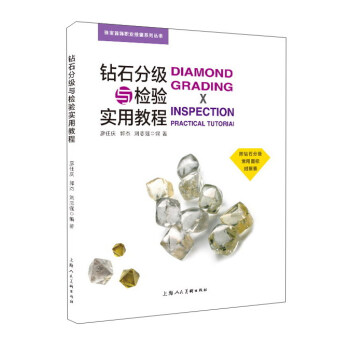


![北方民族大學文庫:阿拉伯國傢概況 [Overview of Arabia Countries] pdf epub mobi 電子書 下載](https://pic.windowsfront.com/12246912/59f30c12N9bb1a741.jpg)
![環境公共治理:歐盟經驗與中國實踐 [Environmental Governance:EU's Experience and China's Practice] pdf epub mobi 電子書 下載](https://pic.windowsfront.com/12246913/5a339571N4f077a77.jpg)


![近地錶地球物理勘探 [Near Surface Geophysical Prospecting] pdf epub mobi 電子書 下載](https://pic.windowsfront.com/12246965/5a339553N2caa622f.jpg)
![美國環境政策研究(二) [Study on the Environmental Policies in the U.S.] pdf epub mobi 電子書 下載](https://pic.windowsfront.com/12246967/5a339572N0bee3351.jpg)
